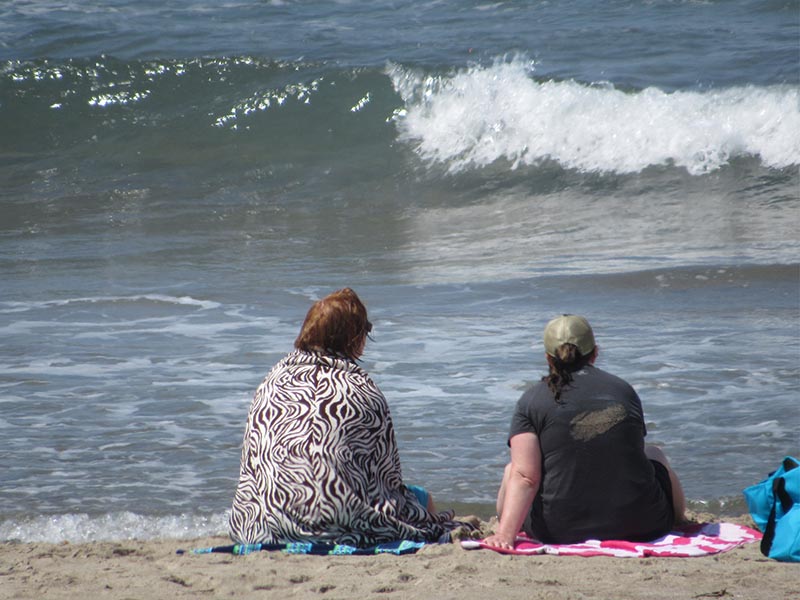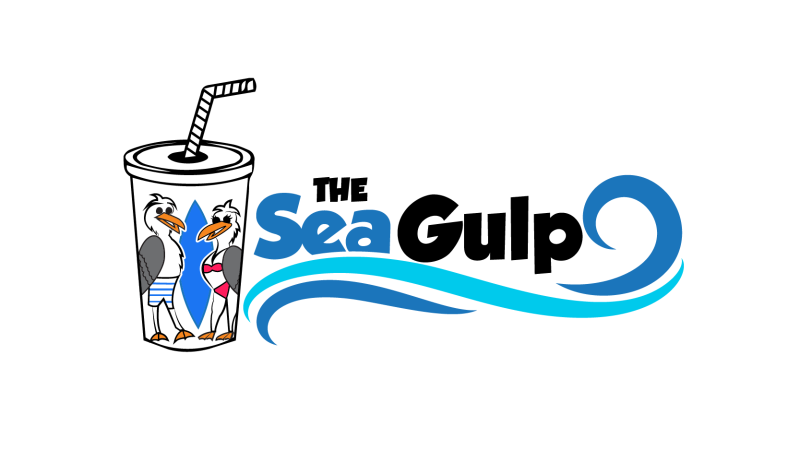
A 15-year-old boy was rescued by his mother and a Surftides employee shortly after noon Saturday, after the teen was separated from his boogie board in the surf near the hotel.
“I was sitting in my hotel room when I heard a man’s voice faintly yelling for help,” Surftides guest Craig Sturdevant said. “It took me a few moments to discern what he was saying. I went out and looked and he was probably 150 feet out in the water and he was separated from his boogie board.”
That’s when Sturdevant called 911.
“The mother and a gentleman employee from here went out and brought him back in,” he said. “When they got back in, mom was doubled over — she was beat.”
A female hotel employee brought the teen a blanket and wrapped him up to keep him warm.
The boy and his mother could be seen sitting on the beach, staring out at the ocean, minutes after the incident.
“I know he’s scared,” said Sturdevant. “I can’t imagine what mom is feeling. I’m just glad everybody is OK.”
Lincoln City Police arrived on scene and North Lincoln Fire & Rescue was called off as the situation was under control.
“Him and mom will have a good story to tell,” Sturdevant said.
——————————————
Beach Safety
When visiting the scenic Oregon coast and participating in recreational activities, safety should be a concern.
Tragic water accidents happen quickly. The most common reason for aquatic mishaps is a lack of safety knowledge. We recommend the following safety tips:
- Learn to swim.
- Never swim alone.
- Supervise children closely.
- Always tell someone else when and where you plan to enter the ocean, whether to surf, swim, skim or boogie board or to take part in any other ocean or beach-related activities.
- Always remember the ocean in this area is normally 55 degrees Fahrenheit or colder. it is good idea to use a wetsuit or other protective gear when swimming. In these temperatures, it takes just minutes for hypothermia to set in.
- Don’t rely on flotation devices, such as rafts.
- If caught in a rip current, swim sideways until free; parallel to the beach. Don’t swim against the current’s pull.
- Alcohol and swimming, surfing, windsurfing or boating don’t mix.
- Protect your head, neck and spine. Don’t dive into unfamiliar waters.
- If you are in trouble, call or wave for help.
- Follow posted regulations.
- Swim parallel to shore if you wish to swim long distances.
- Scuba dive only if trained and certified — and within the limits of your training.
- No glass containers at the beach — broken glass and bare feet don’t mix.
- No beach fires except in designated areas.
- Report hazardous conditions.
- Stay clear of coastal bluffs. They can collapse and cause injury.
- Never turn your back to the ocean. You may be swept off coastal bluffs, beaches or tide pool areas and into the water by “sneaker” waves that can come without warning.
- Do not climb up onto logs on the beach. While they look heavy and sturdy when climbing on them, the smallest wave will roll it over you or a child. Killer logs are real.
- Be aware of sneaker waves, even on the calmest days. Don’t turn your back on the ocean and keep your eye on the surf. Avoid “Killer Surf.”
- Have your beach access available to you at all times. A big wave can come right up to a seawall, leaving you no path for safety, getting you cold, wet and possibly swimming when you don’t want to do any of the three.
- Stay on accessible high ground when storm-agitated surf is on the beach. Oregon State Parks maintains dozens of safe roadside parks and campground access points right along Highway 101 where you can get great photos of dramatic winter surf without endangering yourself.
- Dress for the weather. Layer your clothes to provide you warmth and comfort. And carry along your rain gear to keep you dry when it does drizzle.
Beware the sneaker wave
They’re called sneaker waves because they appear without warning, often surging high up on the beach with deadly force, and are impossible to predict.
How to play it safe: Never turn your back on the ocean.
Watch those logs
The ocean is strong enough to pick up even the biggest log and plop it down on top of you. Some logs may look small, but even the tiny ones can be waterlogged and weigh tons.
How to play it safe: If you see a log in the surf or on wet sand, stay off it.
Look out for deep water & strong currents
The deeper the water, the greater the risk of falling victim to an undertow (the seaward pull of receding waves breaking onshore). These currents can swiftly sweep unwary beachcombers and waders off their feet and out to sea.
How to play it safe: Stay in shallow water.
Know the tides
Incoming tides isolate rocks from headlands and the shore. Avoid the temptation of strolling out to an interesting rock without knowing when the tide rolls back in. Free tide tables are readily available at state park offices, information centers and many shops and motels.
How to play it safe: Stay off rocks and small, enclosed beaches.
Know when the tide is coming in by visiting the tidetable website at the Hatfield Marine Science Center.
Always assume high waves can reach you
Tides and waves can sweep over rocks, jetties and headlands, knocking you off and carrying you out to sea.
How to play it safe: Assume nothing is “high enough” and avoid exposed rocks, jetties and headlands during strong wave action periods (like during and after storms).
Take care around high, steep cliffs
Assume that all cliff edges are unstable. Wet trails or soft sand and earth can make for unstable footing. Rocks can be slippery even when it isn’t raining.
How to play it safe: Make sure you wear proper footwear, and stick to the trails. Stay behind guard fences and railings, and don’t get too close to the edge.
Heads up
Standing at the base of an oceanside cliff can be dangerous, especially if it has an overhang. In some places, winter storms and high waves have eroded the shoreline, increasing the chance of collapsing landforms and slides.
How to play it safe: Beware of falling rocks, and don’t climb on bluffs and eroding hillsides. Don’t walk along the base of cliffs unless absolutely necessary.
Coastal Jetties Have Hidden Dangers
Waves remove or shift even the largest boulders from the jetties, but underwater currents – which penetrate the structure – remove smaller rocks and sand from the inside of the jetty. And that can create dangers – some visible, others hidden:
- Sudden larger waves, even in calm weather, can knock a person off balance or into the water
- Waves and strong currents near the jetty can prevent safe recovery after a fall into the water
- Open crevasses and sinkholes between large boulders create stepping hazards
- Slippery rock surfaces caused by sea spray
- Caverns within the structure, caused by the eroding of stones and sand, could be hidden below a thin surface which can suddenly collapse
How to play it safe: Don’t walk on coastal jetties.
Other Beach Safety Resources
- Oregon State Parks: Read and view important Oregon Coast Beach Safety Tips
- Just Add Water Safety (J.A.W.S.): Click here to download a PDF that contains easy to understand and follow beach safety tips
- Tsunami Preparedness: Find resources (including evacuation routes and maps) that may help save your life if a tsunami were to strike the Oregon Coast








